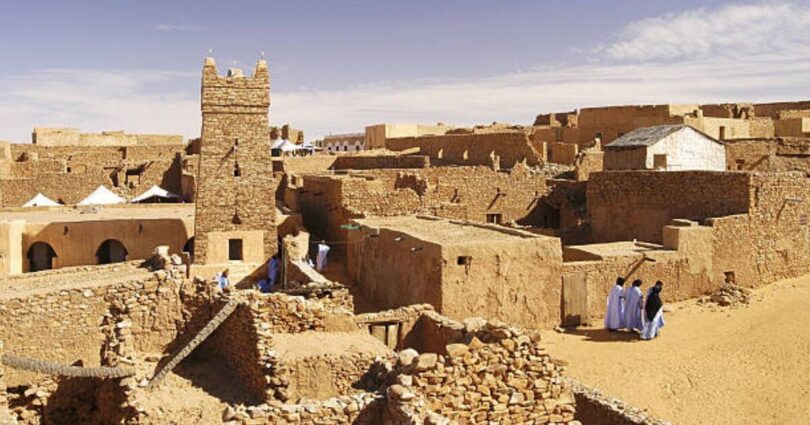A beautiful African city is being “swallowed by the desert” as homes disappear.
Chinguetti is a historically important fortified city and medieval trading centre in northern Mauritania with a population of around 5,000.
Desertification has been an ongoing issue for centuries, with high sand dunes marking the western boundary and houses having been abandoned to the sand.
“It’s a city surrounded by an ocean of sand that’s advancing every minute,” El Wely, the president of the local Association for Participatory Oasis Management, told AP. “There are places that I walk now that I remember being the roofs of houses when I was a kid.”
Deserts are expanding at unprecedented rates due to climate change and “sand seas” are being reactivated, with blowing dunes turning green areas beige.
“What we used to think of as the worst-case scenario five to 10 years ago is now actually looking like a more likely scenario than we had in mind,” said Andreas Baas, an earth scientist from King’s College London.
This small city continues to attract a handful of visitors who admire its spare architecture, scenery, and ancient libraries. It is the most visited tourist site in Mauritania.
The town is divided into two parts by a valley – on one side is the old town and on the other the new town. The old town was founded in the 13th century as part of trans-Saharan trade routes and as a means to connect the Mediterranean to Sub-Saharan Africa.
In 1996, UNESCO designated Chinguetti, along with other cities in the dunes area, a World Heritage Site because of how it illustrates a traditional way of life centred on the nomadic culture of the Western Sahara.
Notable buildings in the town include the Friday Mosque of Chinguetti, an ancient dry-stone structure widely considered by Mauritanians to be the country’s national symbol.
In its heyday, Chinguetti had 24 libraries, housing thousands of Arabic manuscripts – the work of theologians, philosophers, poets, mathematicians, and scientists – from the 11th to the 20th century.
Today, only five are left and open for both scholarly and tourist visits. They contain about 1,300 Quranic manuscripts, which are still used to debate Islamic Law. They are in great danger of being destroyed by the dry air and encroaching sands.
Preservationists have tried to relocate the collections or set up restoration programs locally, but the private library owners refuse to let the texts leave the succession of being handed down and traded amongst themselves.
Source link








